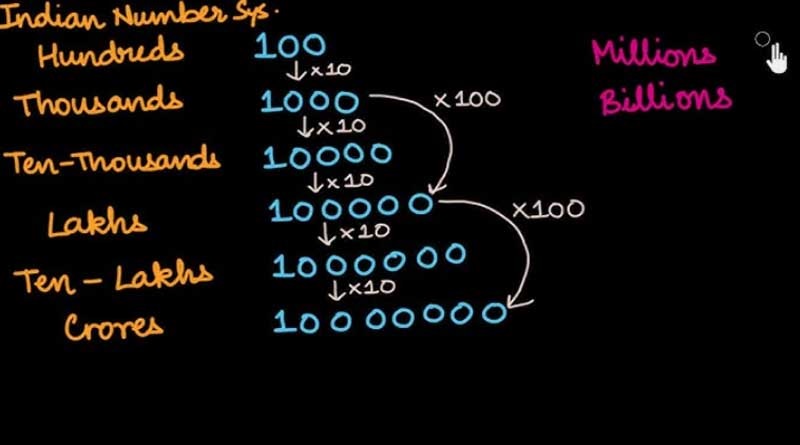What Comes After Trillion
In the vast expanse of numerical possibilities, the journey beyond a trillion is akin to traversing uncharted territories of immense magnitude and complexity. As we delve into this fascinating realm, we uncover a multitude of numerical milestones that defy conventional understanding and challenge the limits of human comprehension. In this exploration, we embark on a voyage through the intricacies of mathematical notation, linguistic variations, and cultural influences, unraveling the mysteries of numbers that come after trillion.
Table of Contents
Understanding the Trillion: What Comes After Trillion
Before venturing into the realm beyond trillion, it is essential to establish a solid foundation of understanding regarding this monumental numerical milestone. A trillion, represented by the digit 1 followed by twelve zeros, exemplifies a magnitude of numerical value that is often encountered in various contexts, ranging from economics and finance to scientific notation and astronomical calculations. Understanding the significance of trillion sets the stage for our journey into the realm of larger numbers.
Read about What Comes After Trillion
Trillion in Linguistic and Cultural Contexts: Bridging the Divide
One of the intriguing aspects of the trillion is its interpretation within different linguistic and cultural contexts. In the long scale prevalent in many European countries, a trillion represents a number with eighteen zeros, while in the short scale used in the United States and other English-speaking nations, it denotes a number with twelve zeros. This disparity in numerical nomenclature underscores the influence of historical, linguistic, and cultural factors in shaping the perception of numerical magnitudes across different regions of the world.
Bridging the Gulf: Quadrillion and Trilliard
As we transcend the boundaries of trillion, we encounter two distinct numerical milestones that serve as successors in the progression of numerical magnitude. In the short scale, the quadrillion emerges as the next milestone, denoting a number with fifteen zeros, signifying a significant leap beyond trillion. Conversely, in the long scale, the trilliard occupies a similar position, representing a number with twenty-one zeros and embodying the rich linguistic heritage of European languages and cultures. Understanding the transition from trillion to quadrillion and trilliard provides insights into the intricacies of numerical notation and the cultural nuances that shape our perception of numbers.
Read about What Comes After Trillion
Beyond Quadrillion and Trilliard: Exploring the Infinite
As we venture further into the realm of numerical exploration, we encounter numbers of staggering magnitude that transcend the limits of human comprehension. Concepts such as googol and googolplex, coined by mathematicians to represent incomprehensibly large numbers, serve as testament to the boundless nature of numerical possibilities. A googol, defined as ten raised to the power of a hundred, pales in comparison to the unimaginable magnitude of a googolplex, which exceeds the number of particles in the observable universe. These astronomical numbers serve as reminders of the infinite potential inherent in mathematical inquiry and the limitless expanse of numerical exploration.
Read about What Comes After Trillion
Navigating the Linguistic Landscape: Long Scale vs. Short Scale
The differences in numerical naming conventions between the long scale and the short scale highlight the linguistic diversity inherent in numerical notation. While the long scale employs a system wherein each new term represents a millionfold increase, the short scale follows a thousandfold increase for each new term. These linguistic variations reflect the historical, cultural, and linguistic influences that have shaped the evolution of numerical notation across different regions of the world. Understanding the nuances of long scale versus short scale notation provides valuable insights into the complexities of numerical linguistics and the cultural diversity of numerical representation.
Practical Applications and Theoretical Considerations
While the exploration of numbers beyond trillion may seem esoteric, it has practical applications in various fields, including mathematics, finance, and scientific research. In mathematical theory, large numbers are often used to explore the limits of mathematical systems and computational algorithms. In finance, they play a crucial role in representing monetary values and calculating economic indicators. In scientific research, they provide insights into the scale and magnitude of astronomical phenomena, quantum mechanics, and cosmological theories. Understanding the practical applications and theoretical considerations associated with numbers beyond trillion underscores their significance in contemporary discourse and scholarly inquiry.
Conclusion: What Comes After Trillion
In conclusion, the journey beyond trillion is a testament to the infinite nature of numerical exploration and the boundless potential inherent in mathematical inquiry. As we navigate the intricacies of numerical notation, linguistic variations, and cultural influences, we gain a deeper appreciation for the richness and diversity of numerical representation. From trillion to quadrillion, trilliard, and beyond, each numerical milestone serves as a gateway to new realms of understanding and discovery. Embracing the infinity of numerical exploration, we embark on a voyage of discovery that transcends the confines of space and time, illuminating the mysteries of the universe and the fundamental nature of mathematical reality.

